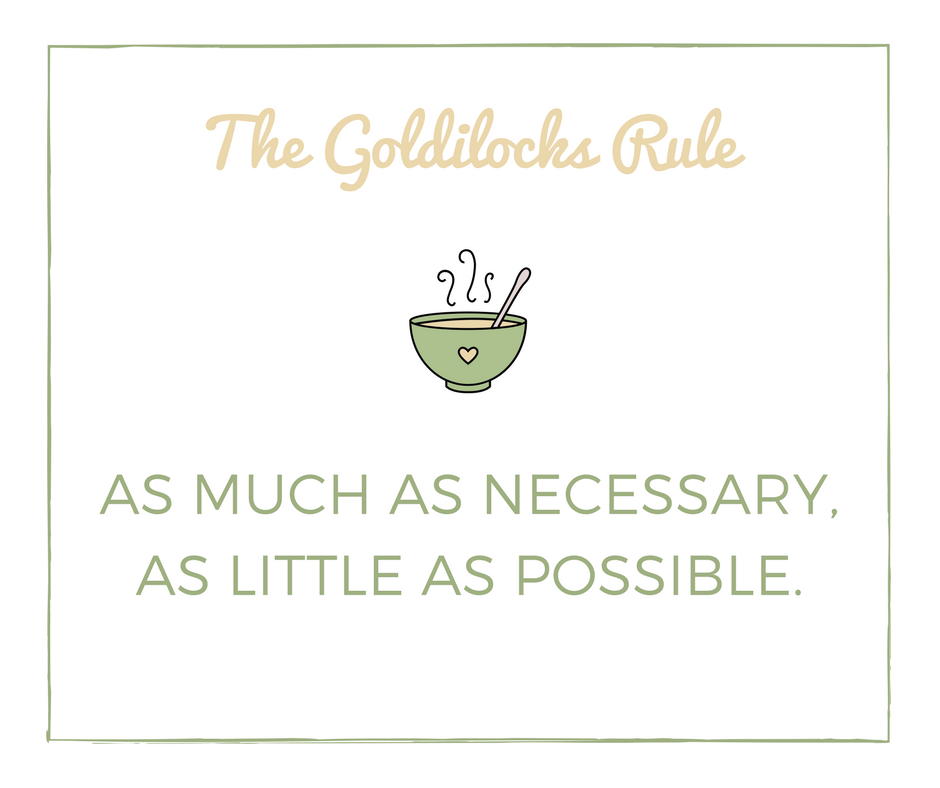

It is likely that the Goldilocks Principle could also be applied to mental demands and social conditions at work and thus have a positive impact on mental, as well as physical, health. Having ‘just right’ physical demands at work may improve productivity, enable people to maintain employment, continue paying taxes, prevent some chronic disease and reduce treatment costs for chronic disease. With many societies facing an ageing population, maintaining physical capacity as the workforce ages is critical to sustained productivity and standards of living. Designing work to be physically beneficial could reach all workers-including the lower socioeconomic group (with its attendant multiple health risks and its traditional lack of response to public health leisure activity campaigns).ĭesigning work to be ‘just right’ and healthy!ĭesigning work which appropriately stresses workers physically will help maintain their capacity. 8 The physical activity in their work is not ‘just right’ and this exacerbates the socioeconomic health gap. 7 Likewise, a high occupational physical workload is related to an increased risk of back pain. For example, male workers who often perform strenuous tasks have an 80% increased risk of ischaemic heart disease mortality compared with workers who seldom/never perform strenuous work tasks (even after adjusting for a range of potential confounders). 6 However, these physically active workers have poorer health, not better health than workers without high physical activity at work. One-third of workers report high physical activity at work. Our reason for focusing on physical activity at work is that it has a huge reach and potential for good. Thus, work should be designed with consideration to workers’ whole-of-life 24/7/52 physical activity. Like planning an exercise programme for different athletes from different sports, so too designing health-promoting work should take account of individual worker capacities, work requirements and constraints, as well as non-work activities. To have a health promotion effect, cleaning work could be designed to have higher intensity bursts separated by tasks offering recovery. 5 This example illustrates the need for a Goldilocks approach-designing work that has the ‘just right’ amount of different aspects of physical activity-for example, the right amount of sitting, standing and moving-arranged in a suitable time pattern.Ĭleaners, in contrast, have long continuous periods of physical activity at low metabolic intensity, causing fatigue without promoting cardiorespiratory fitness. This is historically interesting as only a few decades ago, occupational interventions and policy were aimed at reducing and breaking up standing by introducing more sitting. In response, many organisations now promote standing to reduce time in sitting. Many workplaces have seen a development towards too much sitting.

While there is likely to be a range of ‘just right’ options, well-designed work should include tasks which stimulate a range of positive physiological responses, arranged sequentially to allow adequate variation and time for restoration so that these physiological responses will be triggered.ĭesigning work that is physically health promoting is an issue for both blue and white-collar workers. All these aspects of physical activity at work are likely to be important to get ‘just right’ to have a health-promoting effect. The various dimensions of physical activity (eg, intensity, duration, frequency of different postures and movements) affect different body systems and function (eg, aerobic capacity, muscle strength, range of movement, balance, coordination). She tried the porridge, chairs and beds some were too hot/large/hard, some too cold/small/soft, but some were ‘just right.’ In exercise and sports, the Goldilocks Principle of ‘just right’ has been acknowledged for decades, while in occupational life, physical activity has been designed to ‘not cause harm’ instead of being ‘just right.’ We envision a large potential to maintain and promote health if physical activity at work could be designed according to the Goldilocks Principle. We coin this ‘just right’ paradigm, the ‘Goldilocks Principle.’ In the Goldilocks fairy tale, a child comes across a house in the woods belonging to a family of bears.

Therefore, we argue that the benefits of physical activity, both at work and leisure, can only be seen when the various aspects of physical activity are ‘just right.’ When being ‘just right,’ activity promotes physical capacity and health, when being ‘not right,’ it impairs health. The ‘just right’ paradigm, the ‘Goldilocks Principle’


 0 kommentar(er)
0 kommentar(er)
